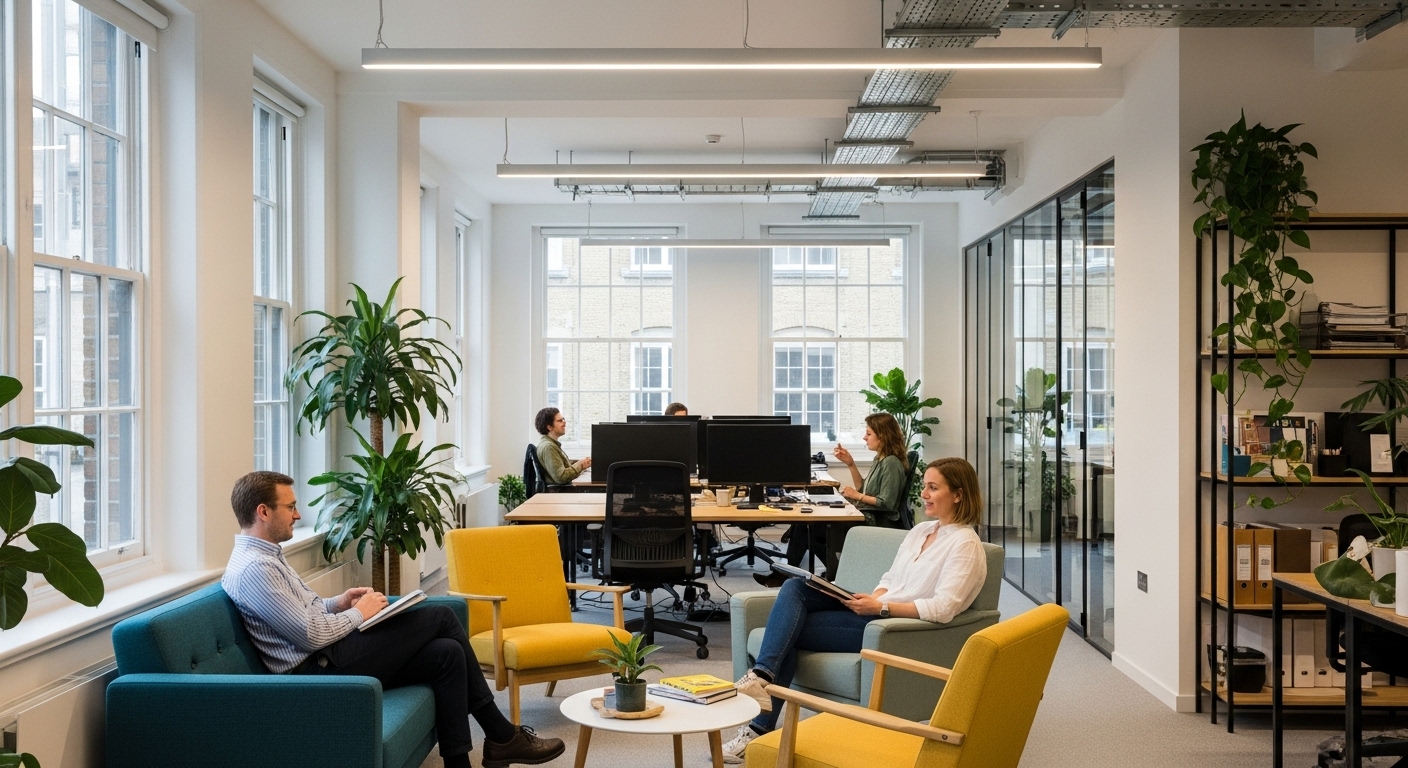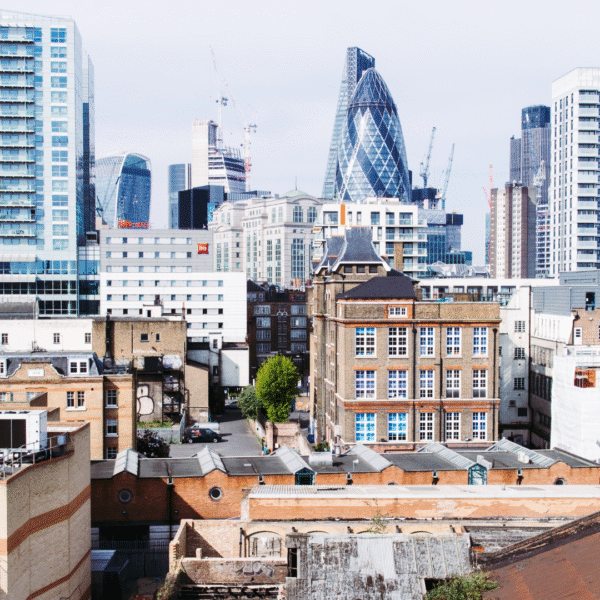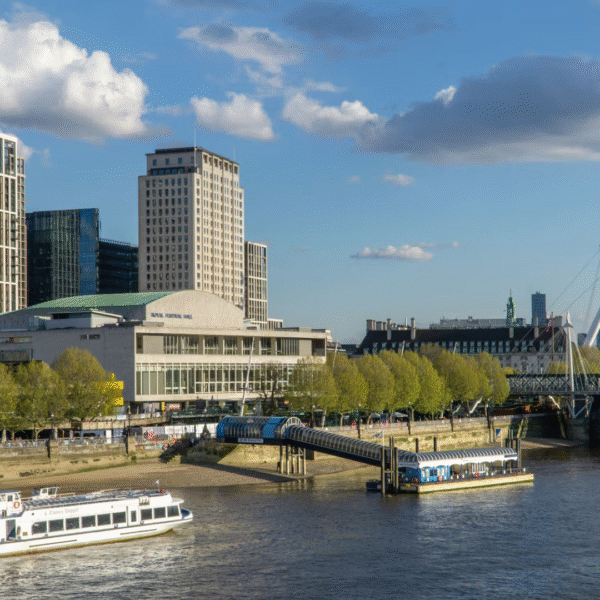The Elizabeth Line has reshaped how quickly people can move across London, and with it, how companies value office workspace. Finance leaders are noticing sharp cost differences: while Central City addresses can command £750 to £800 per desk, equally modern office space just a few stops away often comes in at half that figure.
This is not just a location story. It is a margin story…
How wide is the gap?
Some of today’s most striking price differences include:
- Liverpool Street and the City: £750-£800 per desk
- Farringdon: £550-£850, rising quickly
- Canary Wharf: £250-£350
- Elephant & Castle and Walworth: £250-£400

Transport for London and Knight Frank data show that office space take-up around Elizabeth Line stations has outperformed the rest of London. These office locations accounted for over half of all lettings in Q1 2023 compared to 43% a decade ago. Demand is concentrating around connectivity.
Is London’s office map based on old assumptions?
Perceptions of London’s office districts are no longer aligned with reality. Areas once written off as “secondary” now combine modern buildings, fast transport links and better value. The Elizabeth Line has accelerated this office space change, but the underlying shift is in how companies measure prestige.
Canary Wharf shows how outdated assumptions linger. Once criticised for being sterile or isolated, it has completed a cycle of redevelopment. Today it offers secure, modern office workspace with enhanced retail, housing and public space. Yet pricing remains far below central averages despite being just 15 minutes from the West End.
Elephant and Castle tells a similar story. Historically transitional, it is now benefiting from major regeneration with new housing, cultural venues and flexible office stock. With offices priced at £250 to £400 per desk and direct Elizabeth Line access via nearby interchanges, it combines value with improving urban context.
Farringdon completes the picture. Formerly viewed as fringe, it has emerged as a prime professional services and fintech destination. Rents have risen 46% in the past decade and now approach £850 at the top end, as tenants prioritise both its connectivity and its positioning as a new urban hub.
The mental map of “core” and “fringe” London is therefore lagging behind reality. The premium for central postcodes increasingly reflects legacy perception rather than functional advantage.
Is moving beyond the “centre” now the smart move?
For years companies paid more for central London office space believing it was the only way to secure prestige, access talent and benefit from amenities. The Elizabeth Line has disrupted that logic. Locations once considered fringe now offer Grade A space, strong tenant demand and direct connections to the City and West End.
The difference is cost efficiency rather than compromise.
Companies are reassessing how they compare office space options, thanks to the Elizabeth Line. A growing number now seek:
- Equal quality buildings with sustainability credentials
- Fast Elizabeth Line access for staff and clients
- Pricing efficiency that reduces long-term overheads
- Amenities and urban environments on par with central districts
- Flexibility of scale without legacy lease obligations
Paddington underlines this. Once overlooked, it has recorded a 150% increase in office space deals since the line opened. Global firms such as GSK have relocated close to stations, showing that connectivity and quality now matter more than postcode pride.
The so-called fringe is being rebranded as the smarter core, reshaping how leaders think about risk, cost and growth trajectory.

Why smarter location choices are shaping London’s office future
The pricing gap between “core” and “fringe” locations is widening, while perceptions lag behind. Leaders are asking if paying £750–£800 per desk in the City still makes sense when Canary Wharf, Elephant & Castle or Stratford offer equal connectivity, greater flexibility and often better buildings for half the cost.
At ADAPT, this is where we step in. We help high-growth companies rethink office strategy in line with today’s economics: balancing prestige with efficiency and flexibility with scale. Our expertise lies in identifying off-market opportunities in Elizabeth Line hubs, structuring flexible leases around headcount change, and ensuring CFOs and founders avoid inheriting outdated overhead assumptions.
By decoupling value from postcode hierarchy, we have supported London businesses in locking in significant cost savings while still securing the right space to attract talent and impress investors. Across a decade of partnering with start-ups, scale-ups and venture-backed firms, we have seen how smart workspace strategy can secure breathing room on the balance sheet and fuel confidence in the growth story.
Chris Meredith, ADAPT CEO & Founder, puts it simply:
“The biggest trap companies fall into is paying for yesterday’s map of London. The winners are those who realise the centre has shifted – and act before the market prices that in. Post COVID, the Elizabeth line has rebooted the office space landscape.”
What can you do to get ahead of London’s new office space map?
If your office lease is coming up for renewal, if your team has grown faster than expected, or if you are factoring in the true cost of desk space for 2025, now is the time to question whether you are paying for old assumptions.
Along with hybrid working and flexi options pioneered by WeWork, The Elizabeth Line has levelled the playing field. Modern, sustainable buildings in so-called fringe areas are no longer compromises; they are competitive advantages.
ADAPT can help you cut through the noise – finding smarter, flexible office spaces that fit your business today and future-proof you for tomorrow. That is the ADAPT difference. You can start here.






